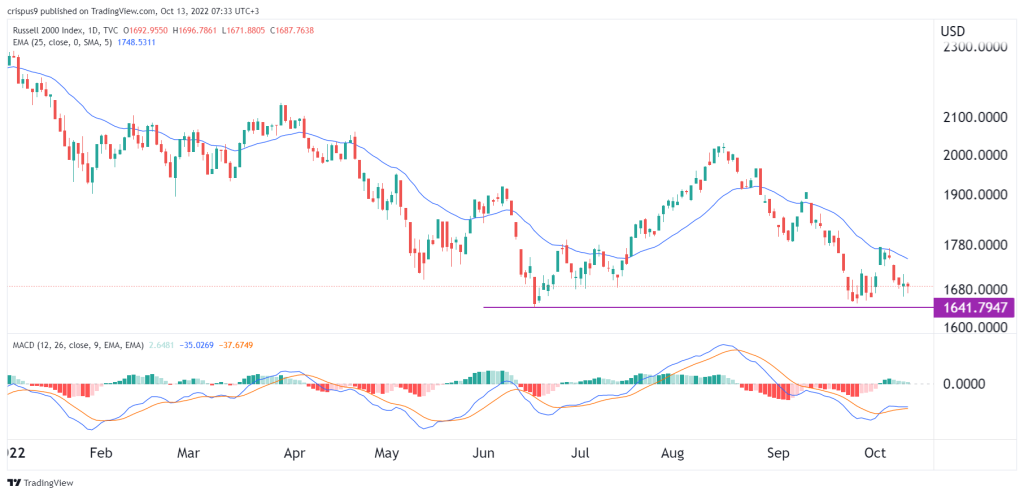- Summary:
- The Russell 2000 index has been in a strong bearish trend as the fear and greed index dropped to the extreme fear level.
The Russell 2000 index has been in a strong bearish trend as the fear and greed index dropped to the extreme fear level. It dropped to a low of $1,687, which was the lowest level since October 3. The small and mid-cap index has dropped by 24% this year, meaning it has underperformed the blue-chip Dow Jones and S&P 500 indices.
Investors are getting fearful
There is a sense of fear in the financial market as investors remain concerned about numerous things. As a result, the fear and greed index has plunged to a low of 19, meaning that investors are extremely fearful.
A look at the key sub-indices shows that market momentum, stock price strength, stock price breadth, market volatility, and junk bond demand have all moved to extreme fear. At the same time, safe haven demand and put/call options have moved to the fear level.
The fear and greed index is usually geared towards the S&P 500. However, the S&P 500 has a close correlation with Russell, Nasdaq 100, and Dow Jones. Therefore, this fear is mostly because of the Federal Reserve and the ongoing events in the UK, where the bond market is struggling. Investors are also unsure about how the war in Ukraine will end.
The next key catalyst for the Russell 2000 index will be the bank earnings season that will start on Friday. Analysts expect that banks will report solid revenue growth, helped by higher interest rates. However, profit growth could continue struggling because of the falling investment banking and higher reserves.
The first banks to report will be JP Morgan, Citigroup, and Wells Fargo. These banks have over $10 trillion in assets, representing about 67% of all globally systemic banks. Historically, their results tend to set the tone for major indices.
Russell 2000 forecast
The daily chart shows that the Russell 2000 index has been in a strong bearish trend in the past few days. At the current price, it is slightly above the important support at $1,641, which was the lowest level on June 16. Gold has also crashed below the 25-day and 50-day moving averages while the MACD has moved below the neutral level.
Therefore, the Russell index will likely have a bearish breakout in the coming days. If this happens, the next key level to watch will be at $1,600. A move above the resistance at $1,750 will invalidate the bearish view.



